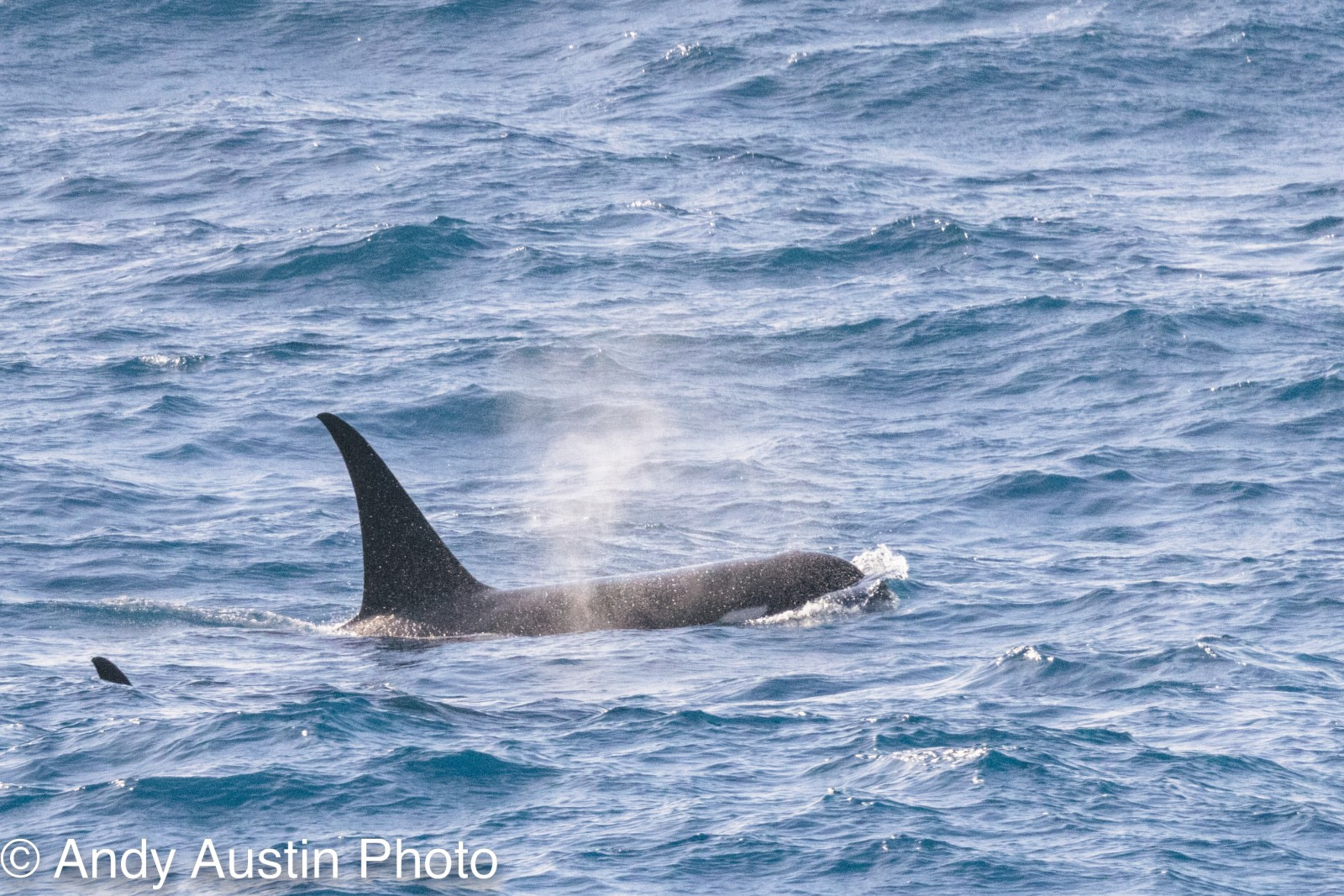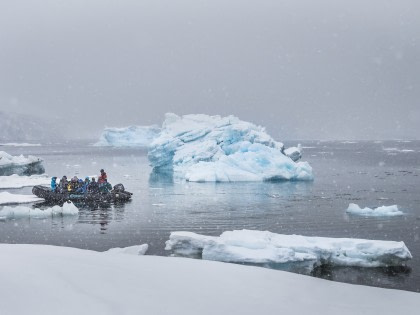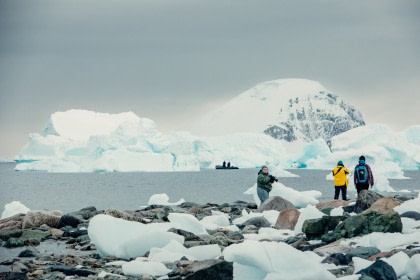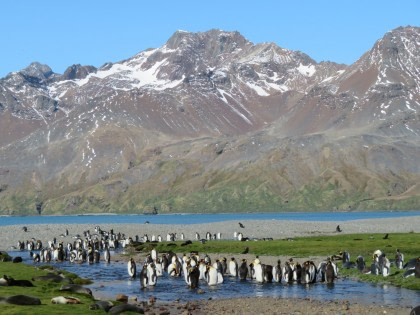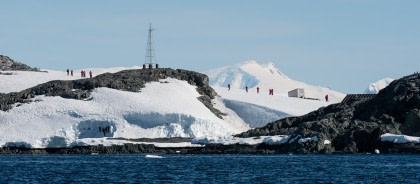Rare type D orca sighting in the Drake Passage
Taking our guests to beautiful polar areas to see exotic polar animals is what we’re all about. Whether we’re spotting polar bears or penguins, humpback whales or leopard seals or whole harems of walruses, it’s the wildlife that really fuels our passion for the polar regions.
Which is why our recent sighting of a type D orca is so exciting.

On December 14, our Ortelius bridge staff spotted this exceptionally rare whale in the Drake Passage. Any marine life enthusiast will tell you this is an event seldom enjoyed even by frequent seafarers. In fact, some believe the type D orca is the rarest marine mammal on the planet.
Type D orcas were not recorded until 1955, when more than a dozen became stranded near New Zealand, and there is still debate among zoologists as to whether they are their own species. This is chiefly due to their many morphological differences: compared to most orcas, the type D has a smaller eyepatch, more rounded head, no snout, and a dorsal fin more pointed and narrow.
Scientists with the National Oceanic and Atmospheric Administration became so fascinated by this debate that they embarked on a type D orca fact-finding mission in 2019, looking for them near the southern tip of South America in an area sightings were last recorded.
Fortunately, a pod of around 25 type D orcas showed up. The scientists filmed them extensively above and below water and also used a harmless method to extract a small sample of skin and blubber from one of the orcas. When they finish analyzing the DNA, they will be able to determine whether type D orcas are indeed their own species as is suspected.

Our type D orca sighting, which took place in the Drake Passage, is close to where the team of scientists encountered their pod. This area of South America’s southernmost tip, known as Tierra del Fuego, is also near the embarkation port for nearly all our Antarctica cruises.
This blustery habitat probably accounts for why type D orca sightings are so rare. Lying between latitude 40 and 60 in the sub-Antarctic waters north of Antarctica, this area known for its rough winds, frequent storms, and often inhospitable weather.
Indeed, the Drake Passage is known among our guides as the Drake “rite of” Passage, as it represents a barrier between Antarctica and the rest of the world in which our passengers sometimes experience seasickness. Fortunately, our years of experience making polar voyages in all manner of weather has provided us many seasickness remedies.

Orcas, also known as killer whales, are among the rarer marine animals we encounter and are actually not whales at all. Rather, they are dolphins and belong to the family Delphinidae. Though Orcinus orca has traditional been considered one species despite showing minor morphological variations across types, type Ds are by far the most different in appearance.
We have written before about the various types of orca, all of which we’ve seen during our voyages at one time or another. But this marks the first type D orca sighting on one of our trips and, as far as we know, one of the few recorded sightings of these orcas on the planet.
